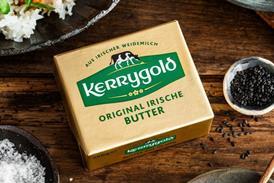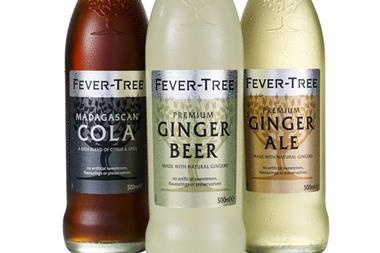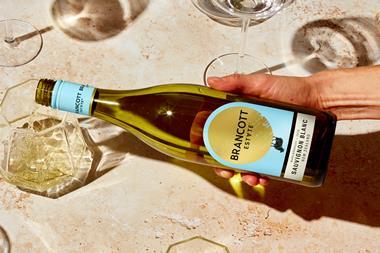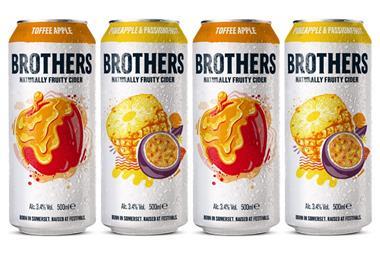
Top story
A late Easter and the weakened pound help boost footfall growth at the fastest pace for five years.
Footfall in April grew 1.6% on the same month in the previous year – the fastest growth since March 2014, according to the latest BRC- Springboard footfall and vacancies monitor.
It is well above the three-month average of 0.7%, which is the first positive three-month average since May 2014, and the highest since February 2012.
The figures were lifted by Easter falling in April this year compared with March in 2016, with a 5% increase in footfall recorded in the first half of the first half of the month – which culminated in Good Friday and Easter Saturday – and dropped 6.4% per cent in the last two weeks.
The rise was fuelled further by the weakened pound, which drove an increase in overseas tourists – demonstrated by the 2.7% uplift in footfall in London’s West End in April – and in Easter staycations among domestic visitors.
High street footfall grew 2.3% cent in April, the fastest growth since March 2014. This was ahead of the three-month average of 1.4%. Footfall to retail park destinations grew by 2.7% in April, the fastest growth since January 2016, and well ahead of the three-month average of 0.9%. Shopping centre footfall fell by 0.6% in April, a slower decline than the three-month average of -0.9%.
“The inclusion of the holidays in this period will have distorted this figure but even looking beyond this, the picture over the last quarter has been largely positive,” said BRC chief executive Helen Dickinson.
“As has been the trend for some months now, high streets across most of the UK attracted the largest increase in visitors out of all shopping destinations. This translated into good news for stores too, which saw their fastest annual sales growth since January last year.
“At first glance the vacancy rate also looks positive for the month, with a modest decline. However, this average figure belies the increase that occurred in all areas of the UK except London, the east and the north and Yorkshire. We will have to wait for the impact of April’s business rates revaluations to materialise, but the challenges businesses face as the UK negotiates its future relationship with Europe has made reducing the burden and fundamentally reforming the business tax system even more critical.”
Diane Wehrle, Springboard marketing and insights director, added: “Easter staycations boosted footfall +5.1% in coastal towns and +7.9% in historic towns. The underlying structural shift towards leisure-focussed trips meant that whilst high street footfall rose +1.9% during retail trading hours, trips to high streets after 5pm increased by more than +3%.
“The vacancy rate also improved very slightly in April to 9.3% from 9.4% in January, but this disguises increases in vacancies in all areas apart from in London, the east and the north and Yorkshire. The vacancy rate is perhaps a portent of things to come; inflationary pressures are likely to increase, which could suppress customer behaviour and therefore occupier demand, notwithstanding the emergence of new occupiers who initially tend to focus on London.”
Morning update
Posh mixer brand Fever-Tree (FEVR) has once again set to beat market expectations in 2017 as the momentum from last year has continued in the past four months. Ahead of its AGM later this morning, the group has issued a short trading update. Chairman Bill Ronald said: “2016 was another exceptional year for Fever-Tree which saw the group continue to gain market share in both the on and off trade across all our markets.
“Fever-Tree remains the pioneer and market leader of the premium mixer category and the momentum seen in 2016 has continued in the first four months of 2017. Given the strong sales in the period to date, the board anticipates that the results for the full year ending 31 December 2017 will be comfortably ahead of current market expectations.
“We look forward to reporting further on our progress at our interim results in July.”
Shares in Fever-Tree fizzed 1.3% higher to 1,725.9p as markets opened this morning.
The FTSE 100 has had a steady start to the week, climbing 0.2% this morning to 7,450.57 points.
Sainsbury’s (SBRY) opened strongly, up 0.8% to 266.8p, with Tesco (TSCO) flat at 178.9p and Morrisons (MRW) down 0.3% to 241.7p.
Marks & Spencer (MKS) is among the early fallers, down 0.7% to 374.6p, along with a 0.6% drop at Diageo (DGE) to 2,291.5p and a 0.5% dip at Dairy Crest (DCG) to 601.5p.
Booker (BOK) nudges up 0.1% to 194.7p as the City anticipates its finals on Thursday. And Premier Foods (PFD) has slumped 1.9% to 44.2p ahead of full-year results tomorrow, wiping off some of the gains made last year on the back of the Cadbury licence renewal.
This week in the City
It’s looking busier on the stock exchange this week, with some big results due to be published.
First up is annual results from Premier Foods tomorrow, with trading profits expected to be some 10-12% lower than forecasts after the company issued a profits warning in Q3. The sweets treat division is likely to be in focus after Premier announced it renewed its licence to continue making Cadbury cakes.
Thursday brings a trading update from Greggs, full-year results from Booker, which is likely to use the occasion to justify the Tesco merger, and a first quarter update from beleaguered Asda.
In wider retail, Mothercare also has its finals out on Thursday.



















No comments yet